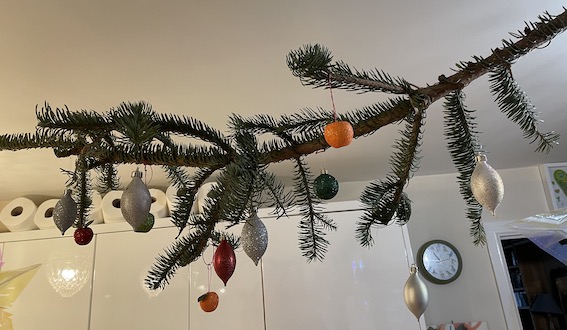Many years ago I attended the annual Outdoor and Woodland Learning Scotland conference. It took place in Dunkeld, which is one of the places in Scotland to see the leaves change colour and become immersed in the beauty of Autumn.

Perhaps my favourite activity was a short, practical session offered by the Abriachan Forest Trust. They manage a community woodland beside Loch Ness. Prior to the event, some volunteers had been uprooting the non-native Sitka Spruce seedlings that grow prolifically in any part of Scotland where this tree was once planted (and still is) for commercial use.

Rather than chucking these seedlings on a compost heap, the Trust allowed a local school to use them as an enterprise project. The seedlings were planted in pots and then decorated and sold to raise money for more environmental projects.
Here’s a tub full of sitka seedlings ready to be decorated!

The young sikta has soft, bright, green needles unlike the adult version where the steely blue glint of the needles warns you that they are lethally sharp.

There was a large choice of natural materials to decorate the trees including cinnamon sticks, mini cones, wood shavings and pot pourri. All available from the back of a car boot! Here’s my little decorated tree!

If your school grounds have unwanted saplings, this sort of activity can be an interesting way to use them for different seasonal celebrations. Alternatively perhaps your school has a tree nursery or children have planted seeds which have grown into saplings to be planted elsewhere. Remember not to cut down or uproot any tree without the landowner’s permission.
Who knows…we may end up with many bonsai enthusiasts in years to come!
Finally for those looking for another sustainable approach, my husband’s family have never had a Christmas tree, either plastic or real. They have always kept an old dead branch that gets attached somewhere and decorated. Last year we copied this tradition with a branch from a blown-down non-native Red Fir (Abies magnifica) in Storm Arwen. You can also find ways to re-use or recycle your Xmas tree in this blog post.

This blog post is an updated version of one that originally appeared in December 2010.




















Trackbacks/Pingbacks